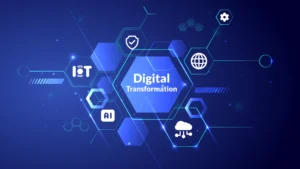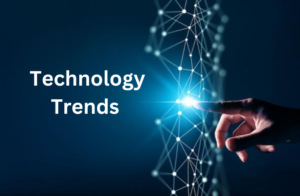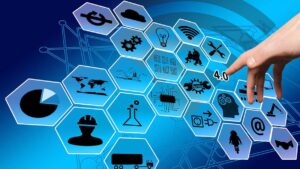10 Technologies Changing Traditional Careers
Nowadays, technology is a major factor that changes practically all spheres and aspects of people’s lives. It goes further than the familiar discussion of home gadgets and digital entertainment; it is rapidly changing traditional vocations, how specialists in specific area fulfill their responsibilities. Below are ten careers and how new age 10 technologies are changing the landscape of the workplaces.
-
Cloud Architect
Technology: Cloud Computing
Today cloud computing is considered as standards for the modern IT environment. Historically, the companies used physical servers to handle data and applications, which means very high expenses and rigid solutions. Welcome to the cloud —inexpensive environment that architects often use by assigning resources in scale. Cloud architects are right at the epicenter of this revolution ourselves. Their work entails the conceptualization and deployment of solutions built in the cloud and that can be expanded or contracted as the case with an organization. They develop designs that lead to dependability, safety as well as efficiency in a virtual world. The benefits of cloud computing are manifold: Virtualization aids in areas where a lot of money would be spent on the physical structures, improves on the manner in which communication is done and last but not the least is the flexibility in the manner in which applications could be implemented.
-
Bachelor of Law
Technology: Legal AI Tools
The profession in law related practice is therefore changing dramatically with the coming of specialty working with artificial intelligence tools. From the perspective of a LLB graduate these tool mark a step change improvement in terms of efficiency and accuracy. other forms of practice, which include computational law, involve the use of legal instruments to help with things like legal research and case predictions, contract analysis as well as anticipations. These 10 technologies can filter through large numbers of legal documents and cases within a few moments and produce results which might take a researcher a couple of days or even weeks to find. And this, not only optimizes the production of work but also increases the accuracy of the legal profession. Matters that were taking a lot of time could be handled quickly by the automation of such work; hence, making them do more work and better still by enhancing the performance of the legal professions.
-
Marketing
Technology: Based on the data, strategic interventions such as Data Analytics and AI can be used to promote health.
Marketing is now one of the fields that has been benefitted the most with the incorporation of data and analytics especially artificial intelligence. Some of the familiar approaches of traditional marketing have included the use of demographic information and wide sweeping advertising techniques. In the present world, marketers use data analysis to uncover rich information regarding buyers’ characteristics, habits, and decisions. AI builds on these capabilities by being able to analyze these data and get trends on them. This also helps marketers to deliver specifically targeted messages and campaigns to individuals thus increasing the probability of the latter engaging positively with the former. Whereas data acquisition and analysis is only in its early stages in most organizations, it is possible to update and fine-tune marketing strategies in real-time which would mean that particular strategies would be applied to specific audience segments with greater efficiency.
-
Artificial Intelligence
Technology: Machine Learning
That is why machine learning, which is AI’s subfield, is inspiring innovations in many sectors. Machine learning algorithms are different from conventional types of artificial intelligence whereby the system is programmed to respond to certain sets of stimuli in a given manner. This capability is revolutionalising all sectors including customer service and even health sectors. For example, machine learning can utilize interactions of customers so as to give future expectations of their behavior, enable auto responses and possibly customer interactions personalization. In healthcare, these models can help to scan medical records to find correlations and trends in diseases’ inception. Machine Learning system’s functionality that is the consistent learning process is prominent for invention and issue fixing.
-
Data Science (Scientist)
Technology: Big Data Analytics
The big data analytics that have been developed have greatly improved the field of data science. Earlier, data scientists operated with rather restricted datasets and assessed trends and patterns which did not transcend a certain limit. Nevertheless, big data has presented great opportunities for the data scientist to have access to big volumes of data form different sources such as social networks, IoTs and corporate systems. Big data tools allow the data scientists to work with such large data sets which give insights to make business related decisions. These may comprise of improvements to the operational tasks of an organization to anticipating the trends of a certain market. Analysing big and complicated data helps organizations to have competitive advantage and to make proper decisions.
-
Petroleum Engineering
Technology: High end Simulation and Supervision
Within the domain of petroleum engineering sophisticated computer tools for developing accurate simulation models and monitoring systems are improving the performance and safety of the extraction process. In the past, conventional 10 technologies meant that many circumstances could be detected involving the possibility of error, as well being relatively inefficient. As to the modern tools, it is possible to notice that they are rather effective and enable engineers to model and simulate various extraction processes with a high level of accuracy. This makes it possible to have better planning and control over extraction processes as they happen. Other measures of remote monitoring also help to increase safety as the data on the conditions of drilling are received in real time and necessary changes can be made immediately. Such developments result in the optimal utilization of resources and enhancing safety conditions in the respective sector.
-
Web Developer
Technology: AI-Powered Development Tools
The use of artificial intelligence in development of web applications has been a game changer in the recent past. Occasionally, the web developers used to spend a lot of time coding and designing the websites manually. In today’s world, the development process is facilitated by many AI tools that perform the above tasks for the developers. It is possible to find platforms in the development process that are based on artificial intelligence which will help in coding, debugging, and designing interfaces. These tools use machine learning algorithms to predict and offer corrective actions which improves the usability and general look of website portals. The overall outcome is an enhancement in the efficiency of software development process as it leaves most tedious but vital tasks to the robots while developers have to concentrate on issues that require their creativity and skills. This not only enhances the rate of development but also increases the quality of web application too.
-
Software Engineering
Technology: Automated Development Platforms
Automated development platforms are becoming the new generation tools that help ease the complexities associated with different software engineering disciplines, especially coding and testing. The conventional software development procedures include code writing, debug and testing which might be a tiresome and cumbersome process. These procedures are made easier and efficient through automated development platforms that contain tools that will automatically generate codes, test, and deploy. This is possible because software engineers have enough time to spend in designing creative new features and enhancing the structure and design of the software products. There are huge benefits to be measured from the continual use of automated platforms such as speeding up the cycle and decreasing errors while employing excellent quality of software. Consequently, there is an improvement in software engineering in terms of increased ability to respond to the demands of its users and the economy.
-
Aerospace Engineering
Technology: One of the major areas of interest in computational methods is the field of computational fluid dynamics (CFD).
In aviation, aerospace engineering the innovation of Computational Fluid Dynamics has positively impacted by enhancing simulation of airflow around aircrafts and space vehicles. Conventional design of aerospace structures before the emergence of aerodynamics concepts was done using empirical methods through wind tunnel testing. CFD facilitates easier computation of flow visualization and hence, the aerodynamic forces and moments in the design; the engineers can assess designs and opt for improvements virtually. This technology provides more accurate predictions in the designs which ultimately result into better and safer aircraft and spacecraft. Virtual prototyping in aerospace engineering helps engineers create accurate simulations of different flight modes and aircraft configuration, thus enabling the prediction of the best performance of the design before constructing the real physical model.
-
Medicine (MBBS)
Technology: This technology includes digital health and telemedicine.
Telemedicine and other 10 technologies in digital health are altering the practice of medicine through the enhancement of health delivery. Earlier systems of medical consultations obliged the patient to travel to health care facilities, which was time-consuming as well as often cumbersome. Telemedicine platforms, which are considered as digital health 10 technologies, let the physicians carry out therapy and diagnosis through other means and without face-to-face contact with the patient. This is especially helpful in cases of the patient is from a remote or a low resource system area. Moreover, effectiveness of health intervention can be checked in real time through digital health tools so that physicians can modify the treatment plan accordingly. These 10 technologies bring out the ease, efficiency and effectiveness of the medical services that are provided to the patents hence improving the satisfaction of the patents.
Conclusion
It can therefore be said that technology remains to be a powerful factor in the various professions as it introduces new techniques and methods that could help increase the effectiveness, precision and creativity in a workplace. From the shift of IT structures through cloud computing to artificial intelligence changing the face of law practice and marketing, these are ways that are redesigning the working of professionals. With the growing advancements of these 10 technologies potential future changes are expected to continue stirring up new opportunities and hurdles in their industries. Appreciation and management of the above 10 technologies will be important for any professional interested in remaining relevant in his or her field of practice and delivering the best results possible.














Post Comment